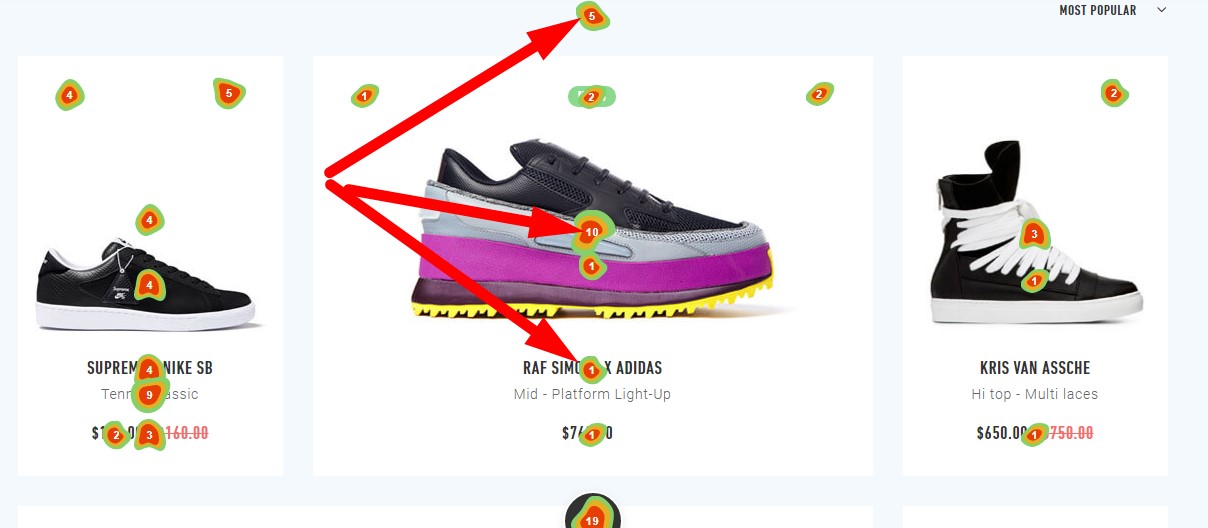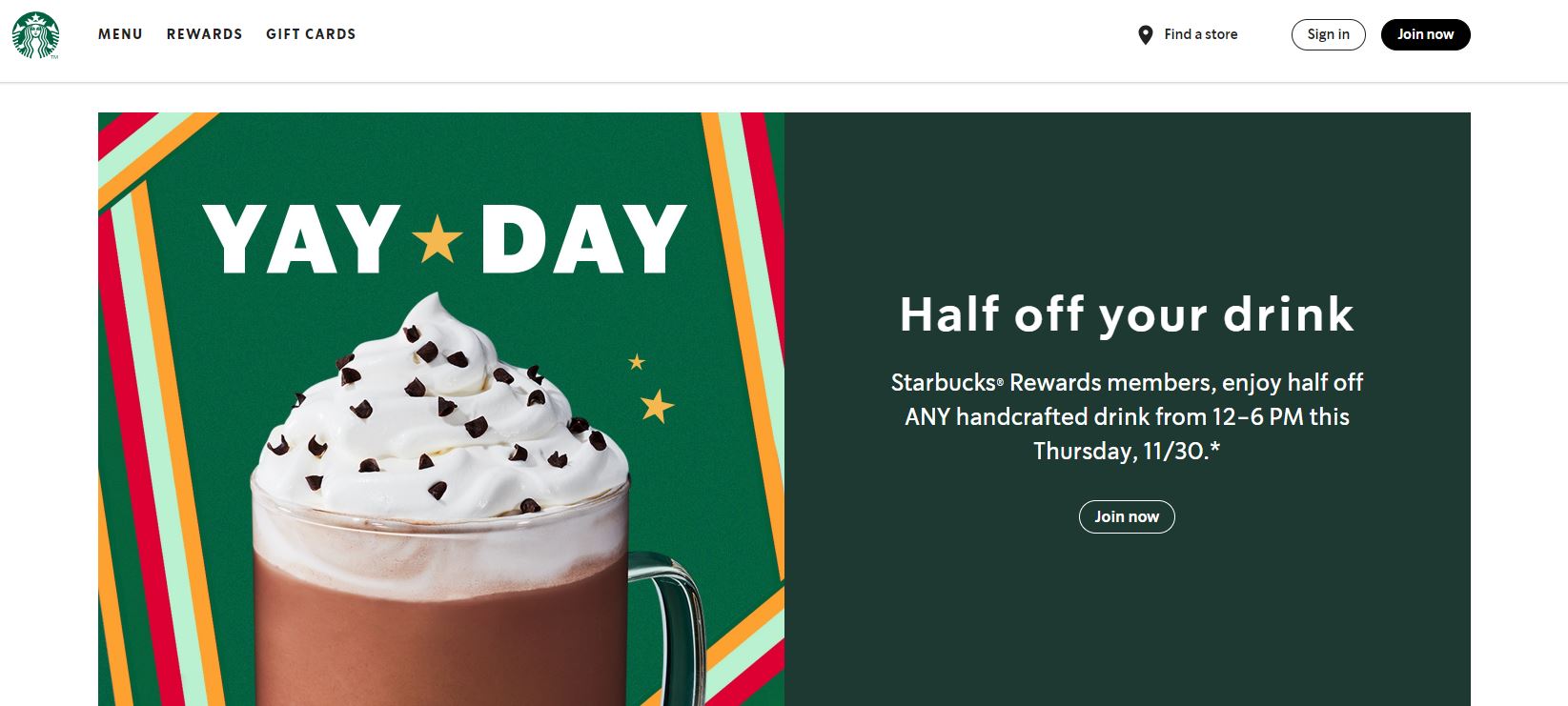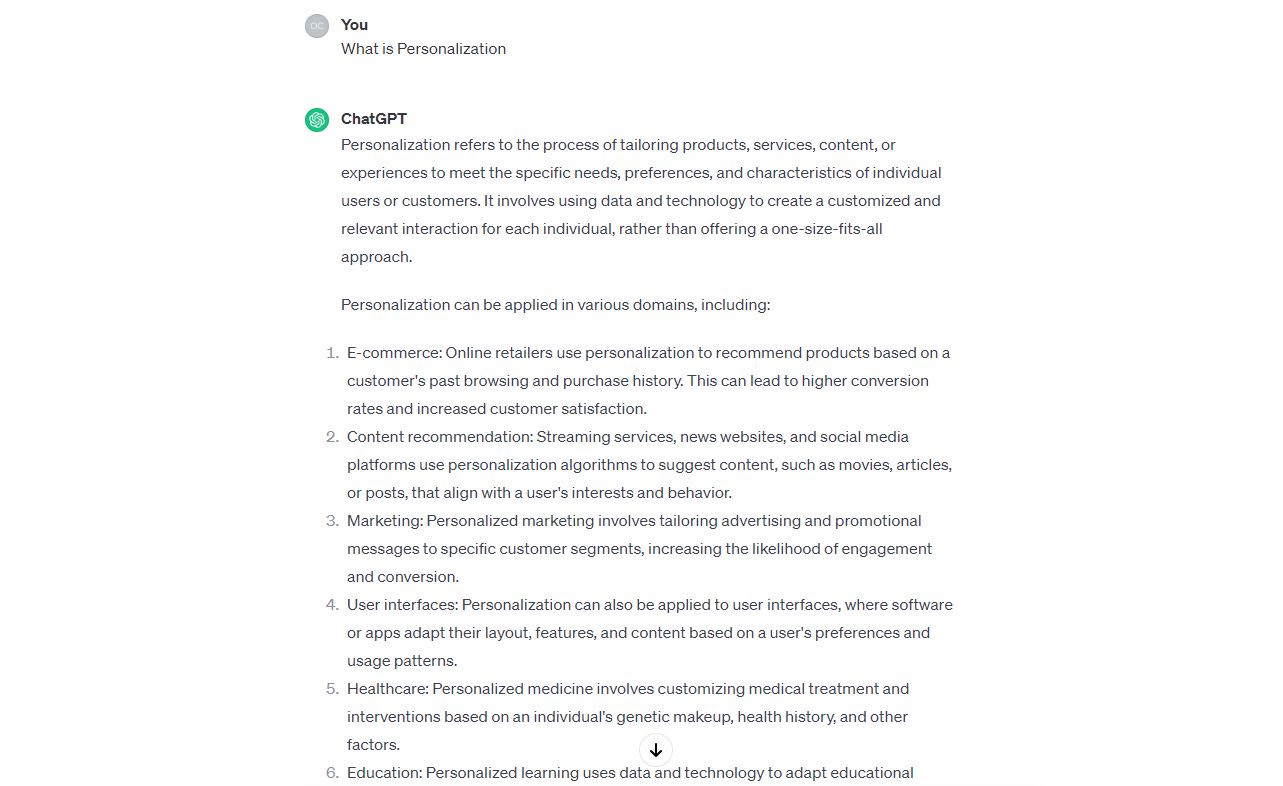Marketers worldwide are harnessing the power of personalization to craft messages that resonate on a one-to-one level, dramatically elevating customer experience. This targeted approach not only garners customer attention but secures loyalty by making the customer feel uniquely understood.
Here’s what leveraging personalization in your marketing arsenal can do:
- Boost Engagement: Personalized content has proven to spark customer interest more effectively than generic broadcasts.
- Enhance Satisfaction: Tailoring products or services to individual customer needs drives satisfaction and repeat business.
- Increase Revenue: Data shows that marketing strategies centered around personalization often result in a higher return on investment.

In this landscape, every customer interaction is an opportunity to apply personalization, turning marketing into a customer dialogue rather than a monologue. Marketers are seamlessly integrating personalization across email campaigns, social media outreach, and content marketing, ensuring that every touchpoint is an opportunity to connect with the customer.
Dive deep into personalization with Plerdy, the tool that fine-tunes your Conversion Rate Optimization (CRO) and user Experience (UX). Empower your marketing strategies with nuanced customer insights and watch engagement — and your brand — flourish.
Unlock the potential of personalization and transform your marketing narrative into a customer success story with Plerdy today.
What is Personalization: The Importance in Today’s Marketing Landscape
In today’s hyper-competitive marketplace, personalization stands as a pillar, driving customer loyalty and enriching their overall experience. Businesses adopting personalization strategies tailor their services and products, ensuring each customer interaction feels individualized and authentic.
Examples of impactful personalization in specific niches:
- Retail: Tailored product recommendations based on browsing history.
- Streaming Services: Playlists or movie suggestions based on previously enjoyed content.
- E-commerce: Dynamic landing pages showcasing items that align with a customer’s preferences.
Personalization goes beyond including a customer’s name in an email. It dives deep into understanding customer behaviors, predicting needs, and creating experiences that resonate. Every touchpoint becomes an opportunity to demonstrate value and appreciation, turning casual interactions into memorable experiences. This approach fosters stronger connections, driving brand loyalty and encouraging repeat business.
Brands may create a conversational customer journey using data and analytics. As a result, consumers often feel valued and understood—compelled to engage more with a brand that caters to their unique tastes and preferences.
In essence, personalization is the bridge that links businesses to meaningful customer engagement. Crafting experiences that match individual preferences ensures every connection is impactful. Dive into personalization, and discover how tailoring each customer experience can transform your brand’s relationship with its audience.
Understanding the Basics of Personalization

Diving into the heart of modern marketing, personalization emerges as a critical strategy to enhance customer interactions and elevate their overall experience. At its core, personalization hinges on tailoring offerings, content, and interactions to meet individual customer preferences and behaviors. It’s not merely about sprinkling in a customer’s name here and there – it’s about shaping a holistic experience that resonates.
Examples showcasing the depth of personalization across industries:
- Hospitality: Hotels offering room customization based on prior stays – from preferred room temperature to favored morning beverages.
- Finance: Banking apps rearranging their dashboard based on frequent transactions or tools the customer often accesses.
- Healthcare: Fitness apps adjusting workout routines based on a user’s progress, feedback, and goals.
By tapping into data-driven insights, brands can break down barriers, crafting a seamless experience for every customer. Personalization isn’t a one-size-fits-all approach; it’s about adjusting the mold for each individual. This not only amplifies customer satisfaction but also drives brand loyalty to new peaks.
In the end, personalization revolves around the customer – understanding their desires, anticipating their needs, and delivering unmatched experiences. By integrating personalization strategies into operations, brands can connect more deeply, sparking engagement and turning everyday encounters into lasting relationships. It’s clear: harnessing personalization stands out as a compelling way to forge strong customer bonds and create unparalleled experiences.
The Difference Between Personalization and Customization
Dive into the heart of customer-focused strategies, and you’ll quickly discern a key distinction: personalization and customization. While both aim to enhance the customer experience, their approaches set them apart.
Personalization tailors the customer experience based on previous interactions and predictive analytics. Brands anticipate needs, making proactive decisions to shape the experience. For instance, a music streaming service playing tracks from your favorite genre without you setting any preference is personalization in action.
On the other hand, customization hands the reins over to the customer. Here, customers tweak and adjust their experience based on personal preferences. For example, a user rearranging widgets on a software dashboard to suit their workflow showcases customization.
To break it down:
- Personalization:
- Brands take the lead
- Based on data insights and predictions
- E.g., Online shops showcasing products you might like, based on past purchases.
- Customization:
- Customers have direct control
- Choices rooted in the customer’s explicit preferences
- E.g., Customizing your coffee order with extra shots and flavors.
In essence, while personalization is about brands predicting what customers might want, customization gives customers the toolset to shape their experience. Both strategies prioritize the customer, yet their paths differ. Harnessing a blend of both personalization and customization can elevate the customer experience, ensuring brands meet the nuanced demands of their audience.
The Role of Data in Personalization
It’s clear that data drives personalization. It drives every customized client engagement, creating a memorable experience. Brands may exceed customer expectations with data-driven experiences.
Consider the journey of a frequent online shopper. Their preferences, purchase history, and even items left in the cart paint a picture. Harnessing this data allows brands to recommend products that align perfectly with the customer’s tastes, resulting in an experience that feels both authentic and individualized.
Data-driven touchpoints elevating personalization:
- E-Readers: Tracking reading patterns and suggesting books aligning with the customer’s taste.
- Fitness Wearables: Adjusting workout recommendations based on collected health metrics and user feedback.
- Food Delivery Apps: Proposing meal choices grounded in past orders and user-rated preferences.
However, while data stands as the linchpin for personalization, it’s paramount that brands utilize it responsibly. Ethical data practices not only preserve customer trust but also ensure the longevity of personalized marketing strategies.
In sum, personalization hinges on understanding and anticipating customer needs, and data offers the insights to do just that. By leveraging these insights, brands can take personalization to new heights, ensuring every customer touchpoint is meaningful, relevant, and compelling.
Benefits of Personalization for Businesses and Consumers
In the bustling marketplace, personalization carves out a unique space, offering tangible benefits for both businesses and consumers. By intertwining data with customer preferences, businesses can elevate the entire shopping journey, creating experiences that truly resonate.
For businesses, personalization acts as a magnet, drawing in customers with offerings that feel tailor-made. This results in increased customer loyalty and, inevitably, a surge in revenue. For instance, a skincare brand analyzing purchase histories can suggest the perfect regimen, ensuring customers find the products that align with their needs.
Meanwhile, from a consumer’s perspective, personalization simplifies decision-making. It cuts through the noise, spotlighting products or services that match their preferences or past behaviors. Imagine a streaming service that curates movie lists based on previously enjoyed genres – this ensures viewers spend less time browsing and more time enjoying.
Highlighted benefits include:
- For Businesses:
- Higher conversion rates as offerings align with customer needs.
- Enhanced brand loyalty due to tailored experiences.
- Increased average order values with targeted product suggestions.
- For Consumers:
- Streamlined shopping experiences, reducing decision fatigue.
- Receiving relevant product recommendations, adding value to the shopping journey.
- Feeling valued and understood, fostering a deeper connection with brands.
In essence, personalization bridges the gap between businesses and consumers. It transforms generic interactions into memorable moments, enriching the customer experience and driving business growth.Personalization helps firms and customers traverse the market more efficiently, making every connection count.
Methods of Implementing Personalization

In the age where customer experience dictates brand loyalty, personalization emerges as a powerful tool, transforming generic touchpoints into memorable interactions. By leveraging diverse methods, businesses can craft a customer experience that feels not just tailored but genuinely authentic.
Start by diving deep into customer data. Behavioral analytics shed light on user habits, allowing brands to anticipate needs. A coffee shop, for instance, can roll out offers on a customer’s favorite brew, making their morning ritual even more enticing.
Another effective approach involves utilizing AI-driven tools. These tools analyze vast amounts of data at lightning speed, pinpointing patterns that might go unnoticed by the human eye. A great example? Online fashion retailers suggesting outfits based on past purchases, ensuring the customer always steps out in style.
Strategies to embrace include:
- Segmentation: Grouping customers based on shared characteristics or behaviors, enabling more targeted outreach.
- Dynamic Content: Adjusting content in real-time based on user behavior, like a travel site adjusting package deals based on browsing patterns.
- Predictive Analysis: Forecasting future behaviors or trends, aiding in more proactive personalization efforts.
In conclusion, personalization weaves together various methods, each aimed at amplifying the customer experience. Brands that harness these strategies not only foster deeper connections but also ensure every interaction feels personalized, authentic, and genuinely unforgettable. With the right blend of tools and insights, businesses can truly make their mark in today’s competitive landscape.
Segmentation and Targeting
Crafting a standout customer experience hinges on understanding nuances and catering to them. By employing segmentation and targeting, businesses amplify personalization, ensuring their messages resonate deeply and authentically.
Segmentation breaks down the broad customer base into more manageable chunks based on shared attributes. Think of a skincare brand segmenting its audience by skin type. This segmentation paves the way for curated product recommendations, elevating the customer experience.
Following segmentation, targeting zeroes in on these segments, delivering personalized content designed to hit home. A luxury car brand, for instance, can target enthusiasts with tailored messages about premium features, enhancing their overall experience.
Essential takeaways:
- Data-Driven Segmentation: Delve into customer data to identify shared behaviors, preferences, or demographics.
- Refined Targeting: Leverage insights from segmentation to send tailored messages, ensuring higher engagement.
- Experience Enhancement: Merge personalization efforts with segmentation and targeting to cultivate a memorable customer journey.
Tapping into the power of segmentation and targeting offers businesses a clear roadmap to personalization success. By segmenting wisely and targeting effectively, brands can create experiences that not only resonate but also foster deeper connections. The path to delivering personalized content that makes a lasting impression lies in understanding the customer inside out – and segmentation paired with targeting achieves just that.
Behavioral Tracking and Dynamic Content
Tapping into behavioral tracking, businesses can glean insights into customer preferences, propelling personalization efforts to a heightened level of precision. Such tracking zeroes in on customer actions—whether they’re browsing a summer dress collection or adding vegan snacks to their cart. With this goldmine of information, dynamic content steps into the limelight.
Dynamic content shifts and adapts based on real-time customer behavior. Imagine a fitness enthusiast visiting a sports gear website and being greeted with content tailored to the latest running shoe trends. This seamless behavioral tracking-dynamic content integration optimizes consumer experience.
Key Highlights:
- Real-time Relevance: Behavioral tracking ensures content remains current and relevant to ongoing customer interactions.
- Tailored Touchpoints: Dynamic content transforms every interaction, offering personalized product suggestions or content pieces.
- Elevated Engagement: Marrying behavioral tracking with dynamic content amplifies customer engagement, making every touchpoint memorable.
By harnessing the synergy of behavioral tracking and dynamic content, brands can craft experiences that resonate deeply, fostering a connection that’s both genuine and lasting. Every click, scroll, and hover offers a glimpse into the customer’s desires, and dynamic content capitalizes on these insights, ensuring that every interaction is curated, relevant, and impactful. Dive deep into this symbiotic relationship, and watch personalization truly come to life.
Machine Learning and Predictive Analytics
In the dynamic landscape of digital marketing, machine learning and predictive analytics stand out as driving forces behind advanced personalization. By leveraging these technologies, businesses can anticipate customer needs and deliver experiences tailored with uncanny precision.
Consider the online fashion industry, for instance. As a shopper browses, machine learning algorithms analyze browsing patterns, purchase histories, and even return habits. Armed with this data, predictive analytics forecasts future buying behaviors, enabling brands to serve up precisely the right product recommendations, thus elevating the customer experience.
Strategic Advantages:
- Data-Driven Decisions: Machine learning sifts through vast data sets, drawing out patterns and trends invisible to the human eye.
- Anticipate Desires: Predictive analytics foresees customer inclinations before they even manifest, setting the stage for impeccable personalization.
- Maximized Engagement: By providing content and products aligned with individual preferences, brands boost engagement and loyalty metrics.
Predictive analytics and machine learning help organizations remain ahead. Instead of merely reacting to customer behaviors, brands now proactively shape experiences, turning every interaction into an opportunity for meaningful connection. With these tools in hand, the promise of personalization transforms from an ambitious goal into tangible results. Brands striving to make their mark must recognize the unmatched potential of these technologies and integrate them into their strategies for an unparalleled customer journey.
Personalized Email Marketing
In the bustling digital marketplace, personalized email marketing emerges as a cornerstone for brands aiming to cultivate meaningful relationships. Personalization helps organizations connect with customers and create engaging content.
Imagine the online book retailer industry. As avid readers engage with newsletters, the backend algorithms detect genre preferences, reading speeds, and even favorite authors. Such insights enable the crafting of meticulously tailored recommendations, pushing the envelope of the customer experience.
Highlighted Impacts:
- Tailored Touchpoints: Personalized email campaigns ensure that every touchpoint aligns with individual preferences, amplifying the chances of a positive response.
- Heightened Loyalty: Customers appreciate when brands take that extra step to understand and cater to their unique tastes. This mutual respect fuels long-term loyalty.
- Boosted Conversions: Precision in personalization means that offers hit the mark more often, leading to increased click-through rates and conversions.
Crafting emails that reflect a deep understanding of individual preferences makes all the difference. No longer just another message in an overflowing inbox, these communications stand out, catching the eye and drawing the reader in. By integrating personalization strategies, businesses don’t just send emails – they deliver curated experiences, weaving narratives that customers eagerly dive into. In the relentless pursuit of excellence, businesses must fully embrace personalized email marketing as an indispensable asset in the ever-evolving dance of digital engagement.
Key Elements of Effective Personalization

Personalization is essential to customer experience for brands to survive in today’s competitive industry. A customized strategy engages and connects with clients. Personalization contains various elements that marketers use to create memorable experiences.
Take, for instance, the gourmet coffee sector. As patrons express their unique tastes, from cold brews to double espresso shots, businesses ensure each sip resonates with the customer’s palate. Personalized recommendations, loyalty rewards, and even the ambience of the cafe play a role in shaping the experience.
Essential Components of Personalization:
- Data-Driven Decisions: Harnessing analytics ensures that personalization efforts align seamlessly with individual customer preferences. A keen understanding of purchase histories, browsing patterns, and feedback can elevate personalization strategies.
- Dynamic Content Delivery: Real-time content adaptation, based on customer behavior, can create an immersive experience that truly stands out.
- Feedback Mechanisms: Brands thrive by looping in feedback for refining their personalization tactics, ensuring a consistently top-notch customer experience.
- Anticipation and Adaptability: Predicting customer needs and flexibly adapting to changing preferences ensures personalization remains relevant and engaging.
Brands that master these facets often find their customer interactions transitioning from mere transactions to rich, tailored experiences. It’s no longer about merely selling a product or service; it’s about delivering an experience meticulously crafted for each individual. In the quest for brand loyalty and affinity, personalization emerges as an indispensable tool for companies aiming to leave a lasting mark.
Challenges and Limitations of Personalization
Businesses seeking to improve customer experience rely on personalization in the busy digital marketplace. However, as brands race to deliver tailored content, they face a maze of challenges that can dilute their efforts.
Reflect upon the fashion industry – while brands aim to suggest the perfect attire, fit, and style based on customer preferences, they sometimes misstep, leading to unsatisfied shoppers and cart abandonments.
Key Hurdles in Personalization:
- Data Overload: While data is the lifeblood of personalization, brands often grapple with an avalanche of information. Sifting through massive datasets to pinpoint what truly matters for the customer experience becomes an uphill task.
- Privacy Concerns: With growing awareness about digital privacy, many customers hesitate to share personal information. Striking a balance between personalization and privacy remains crucial.
- Misaligned Recommendations: Not every piece of personalized content hits the mark. Irrelevant suggestions can put off customers, tarnishing the brand’s reputation.
- Technical Limitations: Implementing real-time personalization requires sophisticated tech infrastructure. Lagging behind in tech advancements can stymie personalization efforts.
As businesses navigate these challenges, the end goal remains unwavering – crafting a memorable, bespoke experience for every customer. While the road to mastering personalization is strewn with obstacles, the rewards of getting it right are invaluable. Brands must muster resilience, continuously refine their strategies, and stay attuned to evolving customer preferences. In the tapestry of modern commerce, personalization is both an art and a science, demanding meticulous attention to detail and an unwavering commitment to the customer.
The Future of Personalization in Marketing

Personalization continues to evolve, molding the future of marketing with precision and agility. The anticipation is palpable, as brands gear up to dive deep into the customer’s world, aiming to elevate the experience to unprecedented levels. The trajectory points towards a more seamless integration of personalization across various customer touchpoints, breaking barriers and setting new standards in customer engagement.
Upcoming Trends and Innovations:
- AI-Driven Insights: The integration of artificial intelligence promises to sharpen the personalization blade, offering real-time, data-driven recommendations that align perfectly with customer preferences.
- Voice and Visual Search: As customers embrace voice assistants and visual search capabilities, personalization will extend its reach, adapting to these novel interaction modes to offer tailored suggestions and solutions.
- Hyper-Personalized Content: Brands will push the envelope, crafting content that resonates on a personal level, effectively turning browsing into a bespoke journey.
- Privacy-Centric Personalization: With the spotlight on digital privacy, future personalization efforts will need to balance tailored experiences with robust privacy safeguards.
Customers stand at the cusp of a new era in personalization, with brands poised to deliver a more intuitive, responsive, and personalized experience than ever before. The travel industry, for example, is on track to revolutionize customer journeys, using personalization to suggest destinations, accommodations, and activities that align with individual preferences and past behaviors. As the tapestry of personalization unfolds, the customer stands at the heart of this evolution, ready to embrace an experience tailored just for them, with open arms.
Conclusion
As our exploration of personalization in marketing draws to a close, it’s clear that personalization stands not just as a trend, but as a cornerstone of modern customer engagement. Effective personalization transcends mere buzz—it requires a deep dive into the customer psyche, facilitated by advanced tools like Sitecore and Emarsys, to deliver a personalized marketing experience that feels less like a sales pitch and more like a one-on-one conversation.
Successful marketing strategies now pivot on personalization—integrating it through Salesforce’s cloud management or Adobe’s creative suite to deliver messages that resonate with individual customers. It’s about crafting a customer journey so unique that each interaction feels exclusively tailored, utilizing platforms like Marketo and Plerdy to optimize every touchpoint.
Here are the takeaways for harnessing personalization in marketing:
- Seamlessly Integrate: Leverage tools such as Sitecore’s CMS for personalized content across all channels—a tactic supported by McKinsey’s research on customer satisfaction.
- Data-Driven Decisions: Utilize analytics and insights to tailor marketing efforts to individual customer profiles, driving meaningful engagement.
- Omnichannel Presence: Ensure consistent personalization across all digital spaces, from social media to email campaigns, with CRM platforms like Salesforce.
Investing in personalization is investing in your customer— and that’s where the true value lies. As we round off this discussion, consider Plerdy for your SEO & UX analysis— it’s the support your team needs to elevate your marketing personalization strategies to their fullest potential. Unlock the benefits of personalization and set a new standard in customer-centric marketing.
Embrace personalization with Plerdy — where technology meets marketing innovation to drive your business forward.
